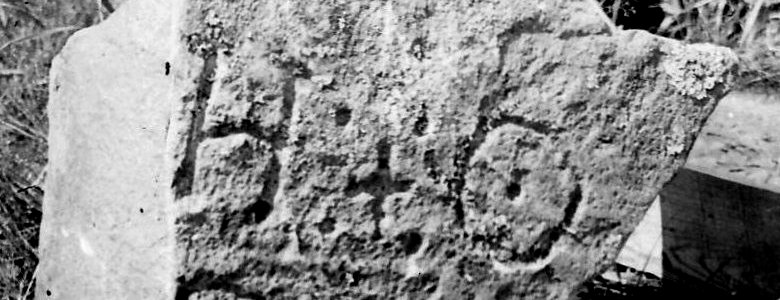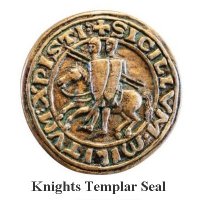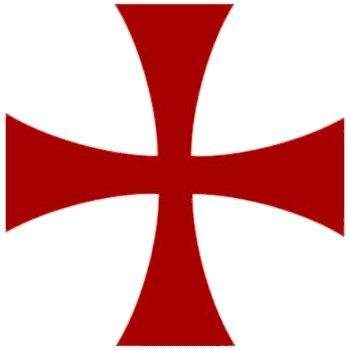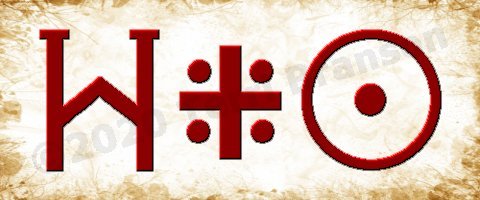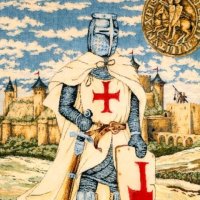DECIPHERING OAK ISLAND’S H+O STONE
Written by Terri Branson
[©2020-2025 All Rights Reserved]
A rather obscure tidbit in a television documentary caught my interest. It was the classic: “Wait a minute. What did he just say?” One short sentence catapulted my thoughts to, of all things, the so-called “H+O stone” from Oak Island. Until then, I had not given much thought to that carved stone, other than to bemoan the fact that people had used dynamite to see what was beneath it. Nothing was found. They blew it up without documenting the site and lost vital clues in the process.
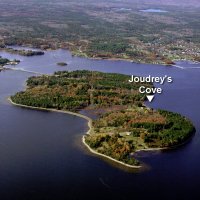 The engraved stone with the odd symbols was supposedly found in 1936 at Joudrey’s Cove, the cove on the north side of the island. Where was it found and in what condition? Was it on the beach? If on the beach, was it in the water, partially submerged or visible only at low tide? Had it slid down toward the beach from a higher point due to centuries of erosion? Had it been buried, requiring searchers to unearth it? Was it hidden among other large stones, making the carving discoverable only by those who knew where to look? What direction did the carving face? What else was carved on the stone? So many unknowns make this stone’s intended purpose difficult to determine, but deciphering the message might be possible.
The engraved stone with the odd symbols was supposedly found in 1936 at Joudrey’s Cove, the cove on the north side of the island. Where was it found and in what condition? Was it on the beach? If on the beach, was it in the water, partially submerged or visible only at low tide? Had it slid down toward the beach from a higher point due to centuries of erosion? Had it been buried, requiring searchers to unearth it? Was it hidden among other large stones, making the carving discoverable only by those who knew where to look? What direction did the carving face? What else was carved on the stone? So many unknowns make this stone’s intended purpose difficult to determine, but deciphering the message might be possible.
One key to deciphering the code may hinge on the peculiar history of the letter H. Best as can be ascertained, the letter H came into common use in medieval Europe starting around the twelfth century. The result is a confusing jumble of spellings for words with varying pronunciations that could be sounded with a soft-H or a hard-J.
The primary focus here is the many pronunciations and many spellings of “Jerusalem.”
On that carved stone, the stylized “H” with peaked crossbars may refer to Jerusalem, which was often spelled “Hierousalem” in Biblical Greek and “Hierosolyma” in Medieval Latin. Also, note that the “H” has been stylized to look like a temple.
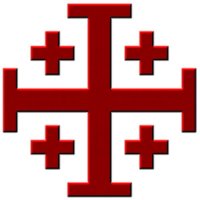 The cross with four dots represents a variant of the Templar Jerusalem cross. Many versions of crosses were used on their battle flags, coinage, and uniforms, but this one is known specifically as the Jerusalem cross. The four points on the cross plus four dots equals eight, a number significant to the Templars. This cross can be drawn with either four dots or four small crosses. The use of this particular sigil is a strong indication that the language is Latin and the subject is Jerusalem.
The cross with four dots represents a variant of the Templar Jerusalem cross. Many versions of crosses were used on their battle flags, coinage, and uniforms, but this one is known specifically as the Jerusalem cross. The four points on the cross plus four dots equals eight, a number significant to the Templars. This cross can be drawn with either four dots or four small crosses. The use of this particular sigil is a strong indication that the language is Latin and the subject is Jerusalem.
The circle with a dot in the middle may represent the alchemical symbol for gold, which also infers the sun. In most cultures around the world, the sun is associated with gold, while the moon is associated with silver.
“H” is the eighth letter of the western alphabet. In Hebrew, the letter “H” can be represented by He (the fifth letter with a number value of 5) or Cheth (the eighth letter with a number value of 8). Both the number 5 and number 8 were known to be used by the Templars.
Therefore, the three-part symbol found on the stone could be Medieval Latin (read left to right) as: “Hierousolyma Templaris Aurum.” That translates into modern English as: “Jerusalem Templar Gold.”
If this interpretation is correct, then why would they place the medieval equivalent of a neon sign visible from the beach area of an island where something was purportedly hidden? In other words, a sign in front of your secret treasure vault might not be the wisest choice. The problem is that this must be understood from a medieval perspective.
The current assumption is that the H+O stone was carved around the same time as the creation of the paved area on the northern end of what is now the swamp. According to what has been reported on the series (The Curse of Oak Island), scientists have dated the creation of that noxious swamp to somewhere in the late thirteenth or early fourteenth century. At that time, no European was supposed to have known how to get to the Americas or even known of the existence of those lands, hence many maps of the time showing the equivalent of “here be dragons” in the western Altantic ocean.
Despite mainstream science looking the other way and holding its collective nose, evidence keeps piling up that people from around the world knew about the Americas and, more importantly, had both the means and the knowledge to get there. That includes the Phoenicians (who might have been mining or trading for Great Lakes copper over 2,000 years ago), the Vikings (who appear to have gotten as far inland as Heavener, Oklahoma in the early eleventh century), the Chinese (who may have landed on the California coast), and the Templars (whose explorations in the western hemisphere are at present unknown).
Assuming the Templars made it to the North American Atlantic coast in the early thirteenth century, their mindset in that time must have been they had reached the most remote area of the world with no expectation that anyone would find it for a very long time. If that is the case, then that three-symbol sign might have served as a “land claim.”
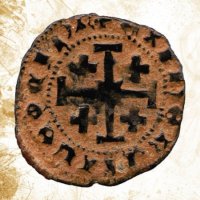 Gold was and still is found on the Nova Scotia mainland. Oak Island sits not far from the mouth of the Gold River, which flows into the waters of Mahone Bay. Since Oak Island is the largest isle near the mouth of the Gold River, it would be the best staging area for a mining operation reliant upon access to ocean-going vessels.
Gold was and still is found on the Nova Scotia mainland. Oak Island sits not far from the mouth of the Gold River, which flows into the waters of Mahone Bay. Since Oak Island is the largest isle near the mouth of the Gold River, it would be the best staging area for a mining operation reliant upon access to ocean-going vessels.
In other words, Oak Island would be the perfect place to set up a watch station, mine for blue clay (which could be traded to many indigenous groups), or dig shafts simply for storage vaults. It could also have been used to maintenance, load, and unload ships. People and goods could have been ferried in small boats down the Gold River and to Oak Island’s north cove. Then that big paved area on the north end of the swamp could have been used to load ships, which had been pulled into what scientists now say was once a small harbor on the south end of the current swamp area.
Although certain assumptions were made in the above scenario, it is not impossible with what is known at this juncture. I’m a writer. I spin stories. Good fiction requires a feel of plausibility. The reader must be able to say: “Yeah, that could happen.”
If we can posit that Templars reached North America in the thirteenth century or perhaps before that, then pondering what they might have been doing on and around Oak Island constitutes a reasonable mental exercise.
Unless someone can find that fragment of the Joudrey’s Cove "H+O" stone which shows the peculiar three-part symbolic message, the age of the carving cannot be determined. If the stone can be found and if the carving can be dated to the medieval era, then a Latin translation may be correct.
ADDITIONAL IMAGES:
